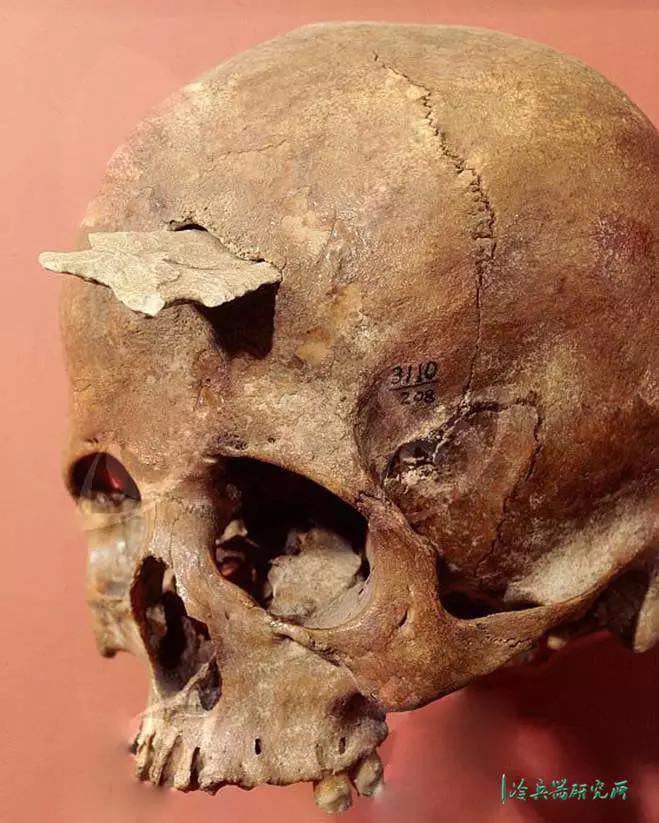In a groundbreaking archaeological discovery, the skull of an Anasazi woman from the Pueblo I Period (750-900 AD) has unveiled captivating insights into the lives of the “Ancient Ones.” These ancestors of today’s Pueblo peoples inhabited the American Southwest long before modern history took shape. This significant find offers a rare glimpse into how ancient communities adapted and evolved over generations, showcasing their resilience and ingenuity in the face of environmental and societal challenges.
During the Pueblo I Period, the Anasazi underwent a remarkable transformation in their way of life. Transitioning from a predominantly nomadic existence, they began establishing permanent settlements across the regions that now comprise Arizona, New Mexico, Colorado, and Utah. This era marked a pivotal shift, as the landscape became dotted with small villages characterized by rows of stone and adobe dwellings. These settlements reflected a new sense of stability and communal living, laying the groundwork for a cultural legacy that would endure for centuries.

The establishment of these permanent communities coincided with a significant agricultural revolution. Maize, or corn, became the cornerstone of their diet, supplemented by beans and squash. These crops formed the “Three Sisters,” a harmonious agricultural system that provided essential nutrients. This shift toward agriculture not only offered food security but also allowed the population to grow and flourish. However, it also introduced challenges. Farming required intense physical labor and created a dependence on successful harvests. The reliance on agriculture meant that seasonal variability and environmental pressures could lead to food scarcity and malnutrition during difficult years.
The discovered skull serves as a valuable artifact, providing important clues about the health, diet, and daily lives of the Anasazi people. Analysis of the skull reveals significant dental wear, a result of consuming corn ground with stone tools. This finding highlights both their dietary practices and the labor-intensive process of food preparation. Grinding maize was a physically demanding activity, often performed by women, which left a lasting impact on their bodies over time. Additionally, the wear and tear on teeth suggest a diet rich in coarse particles, likely from stone fragments mixing with ground maize.
Archaeological evidence paints a vivid picture of the physical demands faced by the Anasazi. As both farmers and builders, they engaged in strenuous daily activities that tested their endurance. Constructing their stone and adobe homes required skill and effort, while maintaining agricultural fields demanded constant labor. These efforts were compounded by the seasonal challenges of living in an arid environment. Nutritional stress, evident in skeletal remains, reveals the toll of hard work combined with occasional food shortages. Despite these hardships, the Anasazi demonstrated remarkable perseverance, creating a thriving society that balanced labor with cultural development.
One of the most intriguing aspects of Anasazi culture is the practice of cranial modification. This deliberate shaping of infants’ skulls was likely a marker of social status or cultural identity. The elongated skulls, achieved by binding an infant’s head during early development, reflected a society deeply connected to its traditions and values. This practice, combined with the rich array of artifacts and petroglyphs left behind, underscores the sophistication of Anasazi society. Their spiritual beliefs were intertwined with their natural surroundings, as evidenced by their intricate rock art, ceremonial structures, and the reverence they held for the land.
The significance of this discovery extends far beyond the individual woman whose skull was unearthed. It offers critical insights into a transformative period that laid the foundation for later cultural and technological advancements. The Pueblo I Period saw the beginnings of practices that would eventually lead to the construction of the massive cliff dwellings for which the Anasazi are famous. These architectural marvels, combined with extensive trade networks and advanced agricultural techniques, became hallmarks of their civilization. Over time, these innovations influenced the development of modern Pueblo societies, which continue to thrive and preserve their cultural heritage today.
This discovery also serves as a testament to human resilience and adaptability. The skull of this Anasazi woman represents a society in transition—one that was actively reshaping its way of life to overcome challenges and embrace opportunities. From their agricultural innovations to their architectural achievements, the Anasazi demonstrated a profound ability to adapt to their environment while fostering a sense of community and cultural identity. Their journey reflects the universal human experience of striving for survival, connection, and meaning.
By studying the remains of the Anasazi, we bridge the gap between the past and present, connecting with the experiences and achievements of these ancient people. Their story reminds us of the enduring quest for resilience and ingenuity that defines humanity. The challenges they faced—from seasonal food shortages to the physical demands of daily life—mirror struggles that many societies encounter even today. Yet, their ability to adapt, innovate, and thrive offers valuable lessons for the modern world.
The skull’s discovery sheds light not only on the Anasazi’s physical and cultural evolution but also on their spiritual connection to the world around them. Through their art, architecture, and practices, they left a legacy that continues to inspire and inform. These ancient remains are more than relics of the past; they are windows into a vibrant and dynamic culture that shaped the trajectory of the American Southwest.
In conclusion, the Anasazi woman’s skull stands as a powerful symbol of human perseverance and the richness of ancient cultures. It offers a glimpse into a world of transformation, where communities faced challenges with determination and created traditions that would resonate for generations. As we uncover these stories written in bone, we gain not only knowledge but also a deeper appreciation for the shared human journey. The Anasazi’s legacy is a testament to the enduring strength and creativity of the human spirit, reminding us of our capacity to adapt and thrive in the face of adversity.





